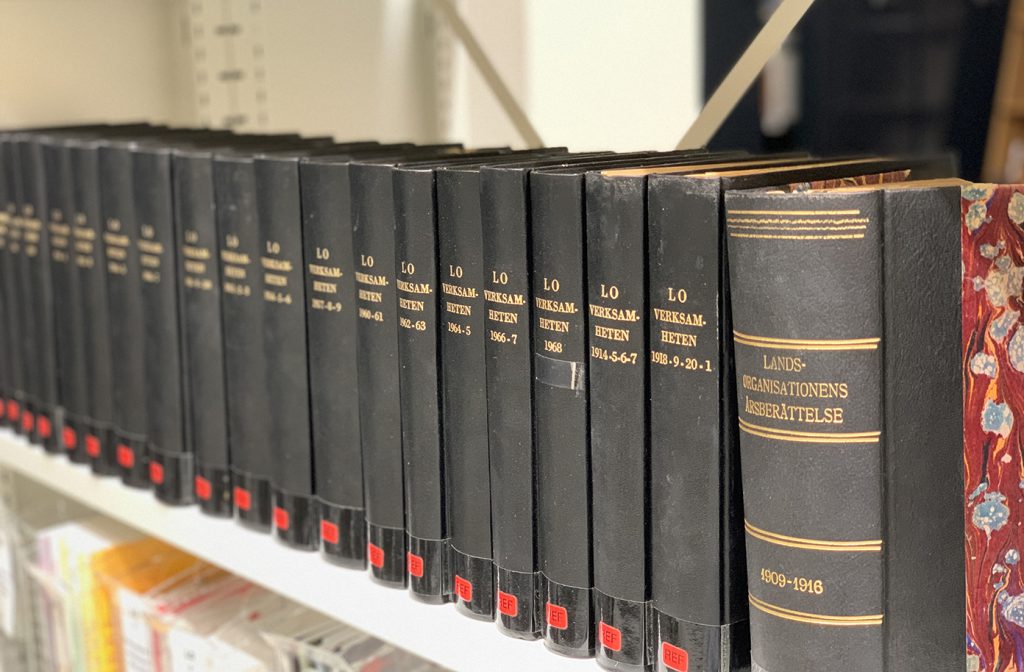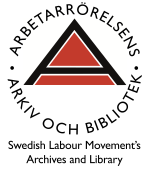ARAB receive over SEK 12,2 million to make available annual activity and financial reports of trade unions from the local to the global level during the perion 1880-2020. The project is funded by Riksbankens Jubileumsfond over a three-year period.

Labour’s Memory is a project which on a large scale will make available material from The Swedish Trade Union Confederation-sphere from the 1880s until today. The project group will digitize annual activity and financial reports from local, regional (Uppland), national (Sweden) and international unions.
Thereafter the digitized material will be made searchable through indexing and computer linguistic search methods. The goal is to make possible to find all occurrences of a word, regardless of the inflectional form and spelling, which improves access to especially the older texts. The material includes everything from handwritten, typed and printed to digital annual activity and financial reports.
– This will create a fantastic resource for both the union movement and researchers. It will open gates to the large physical archives of worker trade unions and their international federations. The project may also serve as a model for archives in other countries that have similar material at their disposal. Also the tool for handwriting recognition will be a valuable contribution for other material from the same period of time, says Silke Neunsinger, head of research at The Swedish Labour Movement’s Archives and Library (ARAB).
Unique documentation
The background to the project is the labour movement’s crucial role for the development of Swedish democracy. Not least, the unions were important in shaping the welfare state and the Swedish labour market model. Also the trade unions and The Swedish Trade Union Confederation had a big international influence. Their archives provides an opportunity to create long, coherent series of documentation of the most important civic association in Sweden.
The work will take place in collaboration between the Swedish Labour Movement’s archives and library, The Popular Movements’ Archive in Uppsala (FAC), Archiv der sozialen Demokratie in Bonn (Germany) and The International Institute for Social History (Netherlands). These archive institutions are together responsible for the database being developed, preserved and made available after the project is completed. This creates the conditions for lasting operation and good accessibility.
Tool for handwriting
Four researchers from Uppsala University are also participating in the project. They are affiliated with the Department of Information Technology, image management; The Department of Linguistics and Philology and the Department of Archives, Libraries and Museums (ABM) and they will, among other things, develop tools for handwriting recognition (HTR), identification of words, phrases and themes and conduct surveys of archive users’ needs for search and analysis tools.
Project leaders are Monica Sparrman, former head of institution of ARAB, and Örjan Simonson, head of the Populars’ Movement Archive in Uppsala.
Annual activity and financial reports included in the project should:
- after the implementation be available on an internet portal for which ARAB and FAC are responsible,
- be possible to identify with a permanent ”social security number” (so called PID or UUID),
- be open data that researchers, the interested public and the trade unions themselves can use to gather information,
- have adequate protection of personal data in accordance to the General Data Protection Regulation (GDPR) and also comply with conditions that depositors may have requested;
- be available to depositors even if it is locked to other users (for example, recent activity reports);
- continue to be deposited documents if requested, which the depositor can take back,
- provide space for newer deliveries that can be handled in the same series with annual activity and financial reports,
- be preserved as digital documents in each archive’s e-archive system.

